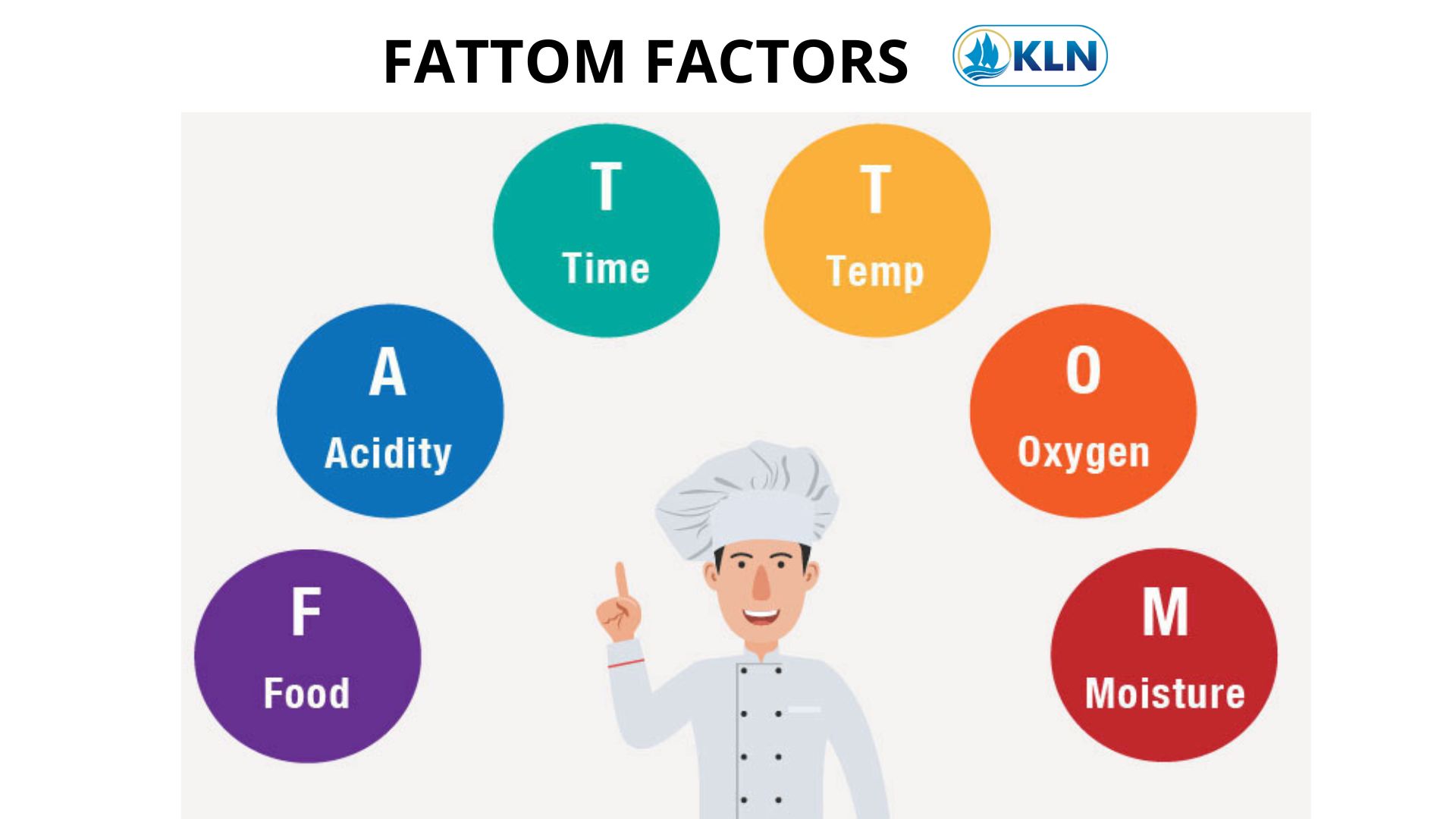FATTOM FACTORS
By. Najih - 24 May 2024
FATTOM (food, acidity, time, temperature, oxygen and moisture) is a mnemonic device used in the food service industry to describe the six favourable conditions required for the growth of foodborne pathogens. FATTOM is a significant concept in food safety management. Food ingredients, work-in-progress materials, finished food products, and the typical environment of food-related businesses create ideal circumstances for the proliferation of detrimental bacteria and other pathogens associated with foodborne illnesses. Controlling FATTOM as a fundamental food safety approach in the food industry enables responsible parties to comprehend the complex interplay of factors that affect microbial growth in food products.
F – Food
Microorganisms need a constant source of nutrients to survive, especially protein. Moist, protein-rich food (raw meat or seafood, cooked rice or pasta, eggs, and dairy products) are potentially hazardous and are considered high-risk foods.
A – Acidity
The degree of acidity or alkalinity (base) of a substance is measured by its pH. pH is measured on a scale from 0 to 14.0. An environment with a pH of 7.0 is exactly neutral. Foods with a pH below 7.0 are acidic; a pH above 7.0 is alkaline.
Bacteria grow best in an environment that is slightly acidic or neutral (pH level of 4.6-7.5) and they flourish in a pH range between 6.6 and 7.5.
Most bacteria will not grow at pH levels below 4.6 because the environment is too acidic. Thus, acidic foods, like vinegar and fresh fruits (especially citrus), seldom provide a favourable climate for pathogenic bacteria.
The Food and Drug Administration’s (FDA) regulations for acid/acidified foods require that the food be brought to pH 4.5 or below.
T – Time
When low acid and high protein available foods are left out too long at room temperature can cause bacteria to grow to dangerous levels that can cause illness.
Food should not remain in the temperature danger zone (40°F – 140°F ) for more than 2 hours, and either be cooled or heated. If the temperature is above 90°F, food should not be left out more than 1 hour.
T – Temperature
Bacteria grow best at a temperature range of 40°F to 140°F – which is referred to as the “temperature danger zone”.
Important rules of food safety are to not leave food at room temperature for too long and store foods at the correct temperature.
O – Oxygen
Almost all foodborne pathogens are aerobic, that is, requiring oxygen to survive and grow.
A few microorganisms grow only in anaerobic conditions (in the absence of oxygen). Botulism, a rare type of foodborne illness, is caused by a specific type of bacteria called clostridium botulism that grows only in anaerobic conditions.
M – Moisture
Water is essential for the growth of microorganisms. Perishability of a food is related to the moisture content, and the water activity level.
Moisture content is the amount of water in food expressed as a percentage. Water activity (aw) is the amount of water available for use and is measured on a scale of 0 to 1.0.
Bacteria, yeast, and molds multiply rapidly with a high water activity level, above 0.86. Meats, produce, and soft cheeses are examples of foods with aw in this range (between 0.86 and 1.0).
.jpg)
.jpg)
.jpg)
.jpg)
.jpg)
.jpg)

.jpg)
.jpg)